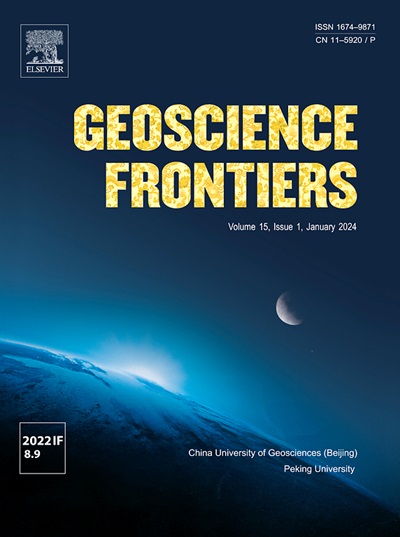An insight into seismotectonic scenario of the southwestern part of Delhi-NCR and delineation of new faults: Implications to seismic hazard potential
IF 8.5
1区 地球科学
Q1 GEOSCIENCES, MULTIDISCIPLINARY
引用次数: 0
Abstract
The southwestern region of the Delhi-National Capital Region (NCR) experiences sporadic micro (M ≤ 3.0) and occasional small (M > 3.0) earthquakes with a seasonal influence. This study integrates remote sensing and seismological data to elucidate the seismotectonic scenario and identify potential unmapped faults. Analysis of DEM data (Cartoset) reveals numerous multidirectional minor faults, some coincident or conjugate to known major faults. Earthquake epicentres spatially correlate with several of these delineated faults. Fault plane solutions suggest a transition from central normal faulting to peripheral thrust faulting. Moment tensor decomposition indicates dominant double-couple mechanisms with significant non-double-couple components for earthquakes ranging from Mw 2.5 to 4.4. A major variation in principal stress orientation is apparent between the eastern and western regions of the study area. Stress inversion reveals a NW-SE shortening direction and unusual principal axis plunges, suggesting a rare “odd” or “unknown” faulting regime. These findings suggest ongoing rifting in the eastern Alwar basin may be inducing thrusting in the surrounding region along pre-existing Aravalli-Delhi fold belt thrusts. Seismogenesis likely results from a complex interplay of faulting, regional tectonics, and fluid interaction. This study highlights the value of a multidisciplinary approach for unravelling the intricacies of seismotectonic in low-to-moderate seismicity regions, with varying strengths due to diverse structural heterogeneity associated with mapped or unmapped (hidden) faults, which have been delineated in this study, as an additional information for assessing seismic hazard potential for Delhi-NCR.

求助全文
约1分钟内获得全文
求助全文
来源期刊

Geoscience frontiers
Earth and Planetary Sciences-General Earth and Planetary Sciences
CiteScore
17.80
自引率
3.40%
发文量
147
审稿时长
35 days
期刊介绍:
Geoscience Frontiers (GSF) is the Journal of China University of Geosciences (Beijing) and Peking University. It publishes peer-reviewed research articles and reviews in interdisciplinary fields of Earth and Planetary Sciences. GSF covers various research areas including petrology and geochemistry, lithospheric architecture and mantle dynamics, global tectonics, economic geology and fuel exploration, geophysics, stratigraphy and paleontology, environmental and engineering geology, astrogeology, and the nexus of resources-energy-emissions-climate under Sustainable Development Goals. The journal aims to bridge innovative, provocative, and challenging concepts and models in these fields, providing insights on correlations and evolution.
 求助内容:
求助内容: 应助结果提醒方式:
应助结果提醒方式:


